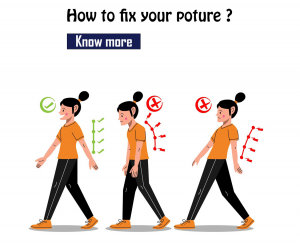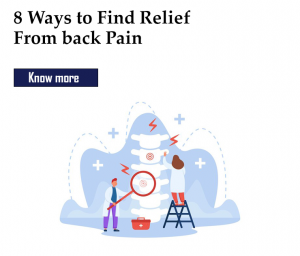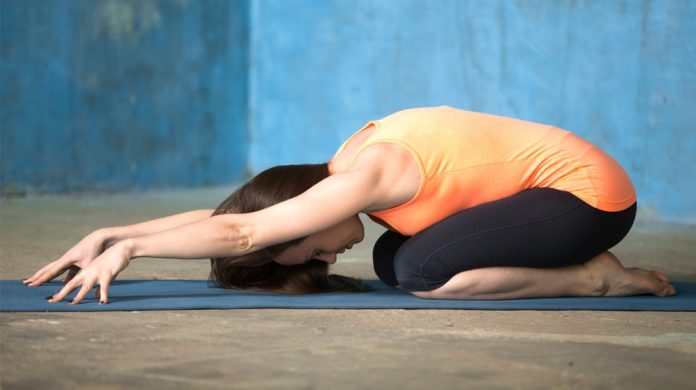If you have a job that requires you to sit at a desk (at home or in the office) most of the day then you know the never-ending battle with low back pain. All it took was a few days of sitting in a slightly altered position, and the low back pain exploded within a week. Have you unintentionally developed the habit of having poor posture or slouching? You may have back pain for several weeks or months if left untreated.
The intensity of the pain (and how long it lasts) can vary, but one thing remains true: how you sit really affects the health of your back, especially if you sit most of the day. . Lower back pain can occur if you lean too far forward or backward, if you don’t support your lower back enough, or if you position the keyboard and mouse too far away.
The annoying thing is that most unhealthy sitting positions don’t even cause discomfort, at least not at first. “It’s very normal to fall into some of these positions because at the time, they may feel very comfortable,” says Supreet Shah, DC, MS, CCSP, a chiropractor at TruSpine in San Francisco. roof”. But a bent or bent position can put pressure on your muscles and make them harder to activate when you stand up and start moving again, which is when lower back pain can occur
It’s not always easy to tell when you’re moving into a sitting position that could cause back pain, but knowing how to spot them is the first step. From there, it’s a matter of tweaking your habits or desk setup — or both — to help you and your back find some relief.
Sitting Positions That Cause Low-Back Pain
There are two main types of slouching, and both can cause lower-back pain. Dr. Shah says the first is kyphosis, which is a condition in which your upper back curves out as a result of hunching your shoulders forward. On the other hand, lordosis results in an overarching spine that forms a large C-shaped lower back.In these two positions, there is added strain on the neck and back. Dr. Shah tells POPSUGAR.
The extra pressure can reduce blood supply to the muscles in the back, core and abdomen, he says, which can lead to “additional stiffness and weakness in certain areas of the body, like the back lower and abdominal muscles.
The problem is that it’s not always easy to tell when you’re falling into one of these stooped positions. Most obviously, stiffness and pain in the lower back is often a sign that you have started to get off track and your current or usual sitting position is not good. However, sometimes, certain sitting positions can cause pain in other areas before causing lower back pain. Here are some cautionary indicators to be aware of. Round shoulders.
If you often sit with your shoulders rolled forward, this can initially cause pain at the base of the neck, across the shoulders, or between the shoulder blades, says Dr. Shah.
Shoulders raised. It’s normal to let your shoulders point toward your ears, which can lead to tension and stiffness in the upper back. You may also notice one shoulder rising slightly compared to the other due to uneven use. “Most of the activities performed are typically one-sided,” such as using a computer mouse or carrying a handbag or backpack, Dr. Shah said. “You’ll notice that one shoulder will have a spike, which may cause pain in that area of the body.
Head tilted forward. Also known as tech neck, carrying your head forward puts extra pressure on your neck, says Dr. Shah. Every inch your head tilts forward “corresponds to about 10 pounds of extra weight on the neck,” he adds.
Recurrent tension headaches. You often feel tension headaches at the base of your skull or on one side of your head, says Dr. Shah. They can also look like a tight headband around your head. Although tension headaches can be caused by a number of factors, including stress, anxiety, eye strain and lack of sleep, poor posture can also be a cause of headaches.
These postures and signs of slouching may not cause back pain immediately but over the long term.
How to sit when you have back pain
When you have lower back pain, the solution isn’t always as simple as sitting up straight. There are a number of things you can do to quickly relieve a flare-up of low back pain, but if the problem is more chronic, you may consider changing your desk layout or incorporating stretching and standing breaks into your routine day.
Tape the area. Inflammation can make your discomfort worse, which is why Dr. Shah recommends applying ice packs to painful areas of your lower back. Keep it there for 10 to 20 minutes, followed by a rest period of the same length, and repeat as needed.
Play a few Cat-Cow tricks. Dr. Shah says this yoga pose puts your lower back through a full range of motion, which can help “take pressure off your lower back.” Try a few circuits or combine it with a gentle yoga move.
Get up and walk. Stiffness can occur when there is less blood to the back and core muscles, which can “turn them off” and lead to pain. Getting up from your seat and moving around, even for just a few minutes, will signal your muscles to stay activated, says Dr. Shah.
Make an appointment with your doctor or orthopedist. If your lower back pain is severe or debilitating, make an appointment to see your doctor. You should also see a doctor if back pain occurs after a fall or injury or if it is related to bowel or bladder problems, leg weakness, or fever. These could be signs of serious health problems, such as sciatica or a kidney infection
If you have chronic back pain, here are some solutions you can try. Evaluate your office setup. Make sure the screen is at eye level, and the keyboard and mouse are close to your body and not too high or too low – you shouldn’t feel like you’re reaching or straining when using them. “The height of the chair is also important,” says Dr. Shah. Make sure the angle between your hips and torso is “a little above 90 degrees,” he adds.
Add lumbar support. Place a rolled up towel or blanket behind your lower back for added support, especially if you tend to arch your lower back.
Stretch the area.Apart from yoga and cat-cow stretches, , Dr. Shah recommends trying shoulder stretches if you notice a forward tilt in your upper back. Bring your shoulders toward your ears while keeping your arms at your sides, palms facing forward. Rotate your shoulders toward your lower back to reset them and relieve tension. Use a foam roller. Foam rolling for 5 to 10 minutes can be a good self-massage for your back and the supporting muscles in your legs.
Dr. Shah recommends placing the foam roller horizontally on the floor, lying on it, and running it along your upper back, glutes, and hamstrings. You can also rotate the foam roller vertically and lie on it, keeping the roller along your spine. Stretch your arms out to the sides to open up your chest muscles, which tend to collapse and contribute to slouching when working at your desk. Make an appointment with your doctor or orthopedist. Seeking professional help isn’t just for severe flare-ups. If your lower back pain doesn’t go away after a few weeks of trying these methods, or if it gets worse, call your doctor or chiropractor and make an appointment for private treatment.
























